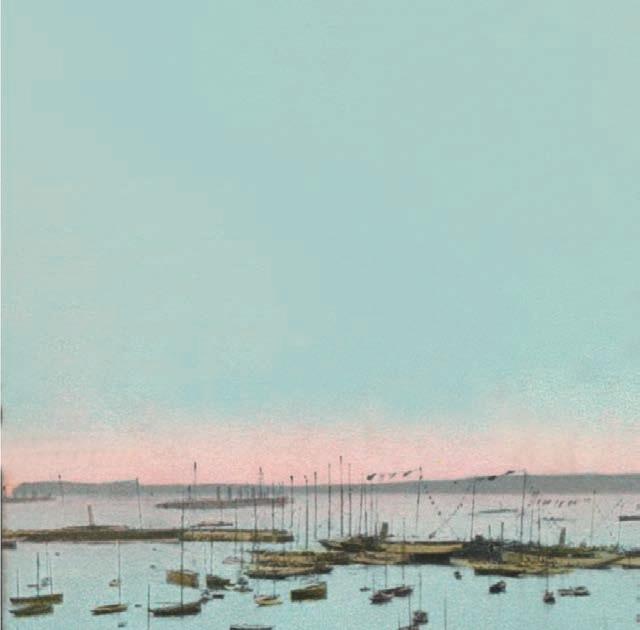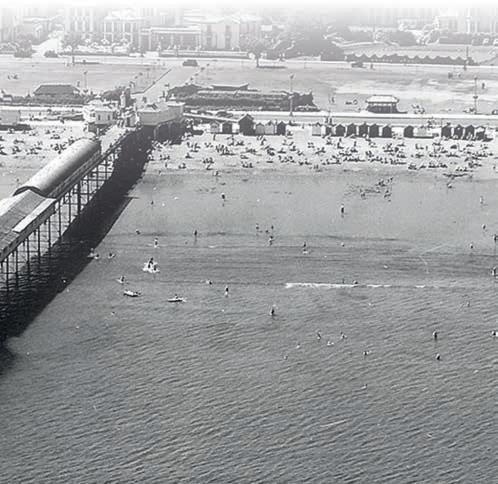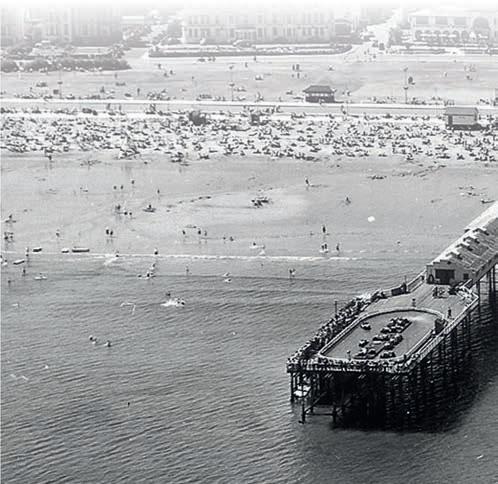
4 minute read
Ian Handford introduces the seamans’ friend
Does Torquay have a Pier?

Advertisement
Princess Pier circa 1907
Paignton has a pier; Teignmouth has a pier. But does Torquay? Kevin Dixon mulls over the evidence.
First, we need to de ne what a pier is. e architectural de nition of a ‘pier’ is a strong pillar used to support a structure. It’s from the late Old English, ‘pere’, ‘support of a span of a bridge’. e word then came to mean a structure built on posts extending from land out over water. Importantly, a pier is a structure that water passes beneath. What Torquay then has is a breakwater, a solid structure down to the seabed.
It could have been so di erent. Very late in the game in 1878, speculators hoped to construct piers at Torquay, Falmouth and Plymouth for the use of pleasure steamers and promenaders. And in 1881 and 1883 local groups planned a true pier reaching out from the Palm Court Hotel - now Abbey Crescent- along the lines of those piers that could be seen in Brighton or Blackpool. ese grand plans were all rejected.
To consider why Torquay is unusual for a tourist resort in not having such a pier, we have to go back to the origins and story of that British icon. Originally piers were just landing docks. e rst pleasure pier, at Ryde on the Isle of Wight, was built in 1814, and by 1850 there were a dozen piers at British seaside resorts. ese were fashionable and
select extensions of the seafront promenade; they allowed to preserve its elite image? Proposals for a pier were holidaymakers a walkway out to sea, a way of being out on repeatedly presented, but the local Board of Health the water but above it. was not enthusiastic and neither was the town. When ese early nineteenth century resorts were generally the local Board took over the harbour in 1883 it was limited to the upper classes. is would change as the decided that a stone pier was required for a new mooring Industrial Revolution raised the income of the average basin. A committee then visited other resorts to view the working person. Improvements in transportation brought opportunities to create something special. greater mobility as steam-powered railways and ships But the hoped-for ‘something special’ wasn’t to be, as created the working class holiday. the town’s conservatism asserted itself. A public meeting
Consequently, piers became working class palaces. was held which even saw the modest o er of a covered What had once been a bandstand turned down. setting for the gentry was transformed into a part of a new holiday culture - the ‘improving’ entertainment “ But was a pier really suitable for Torquay, ghting to preserve its elite image? Proposals for a pier were repeatedly presented, but the local en a poll of ratepayers was undertaken. is rejected the proposal to construct a fullscale pier by a commanding of classical concerts giving Board of Health was not enthusiastic 3,194 to 1,296. In its place way to variety shows and amusement rides. and neither was the town. came a much more limited proposal that featured a
Iron provided enough rigidity to support a whole range small pavilion. is was grudgingly accepted. Torquay of entertainments and attractions along a pier’s length. would not have a grand pier that could have attracted ere were ornate pavilions, delicate ironwork, and exotic unsuitable visitors. lighting. e Promenade remained but there were also: Work on the pier commenced in 1890 as a simple mass theatres, penny arcades, bowling alleys, Punch and Judy concrete groyne. A steel lattice girder and timber structure shows, minstrels, acrobats and carousels plus ice cream, was added in 1894, followed by a landing quay on the photographers, naughty postcards, to ee apples, music hall seaward side of the pier-head in 1906. So, both Haldon songs and smutty comedy. Into the mix came rollercoasters, and Princess ‘Piers’ were functional, built primarily as gang ghts, ‘What the Butler Saw’ machines and then breakwaters, harbour walls or landing stages and not as a cinema. Eventually electricity arrived and the new lighting focus for leisure. e appellation and adornment was added made nighttime entertainment ourish. for promotional purposes. is wasn’t free, however. ere was a charge just to During the 1960s and 70s the package holiday was born enter the turnstile at the foot of the pier. ere were fees for and many seaside towns fell into a steady state of decline, sitting down and entering dance halls. some piers burned or collapsed. In April 1974 re gutted ‘ e
For many visitors these were miracles, providing an oasis of Islander’ bar on our own Princess Pier and, due to damage to abandonment where, during one week a year, working class the underlying timber, the building was demolished to deck people could enjoy the good life. By 1900, there were 80 fully- level. Torquay’s rst pavilion was never rebuilt. But across the edged piers, with some seaside towns having two or three. country piers are now having a renaissance and reinventing
But was a pier really suitable for Torquay, ghting themselves as part of a new seaside experience.












